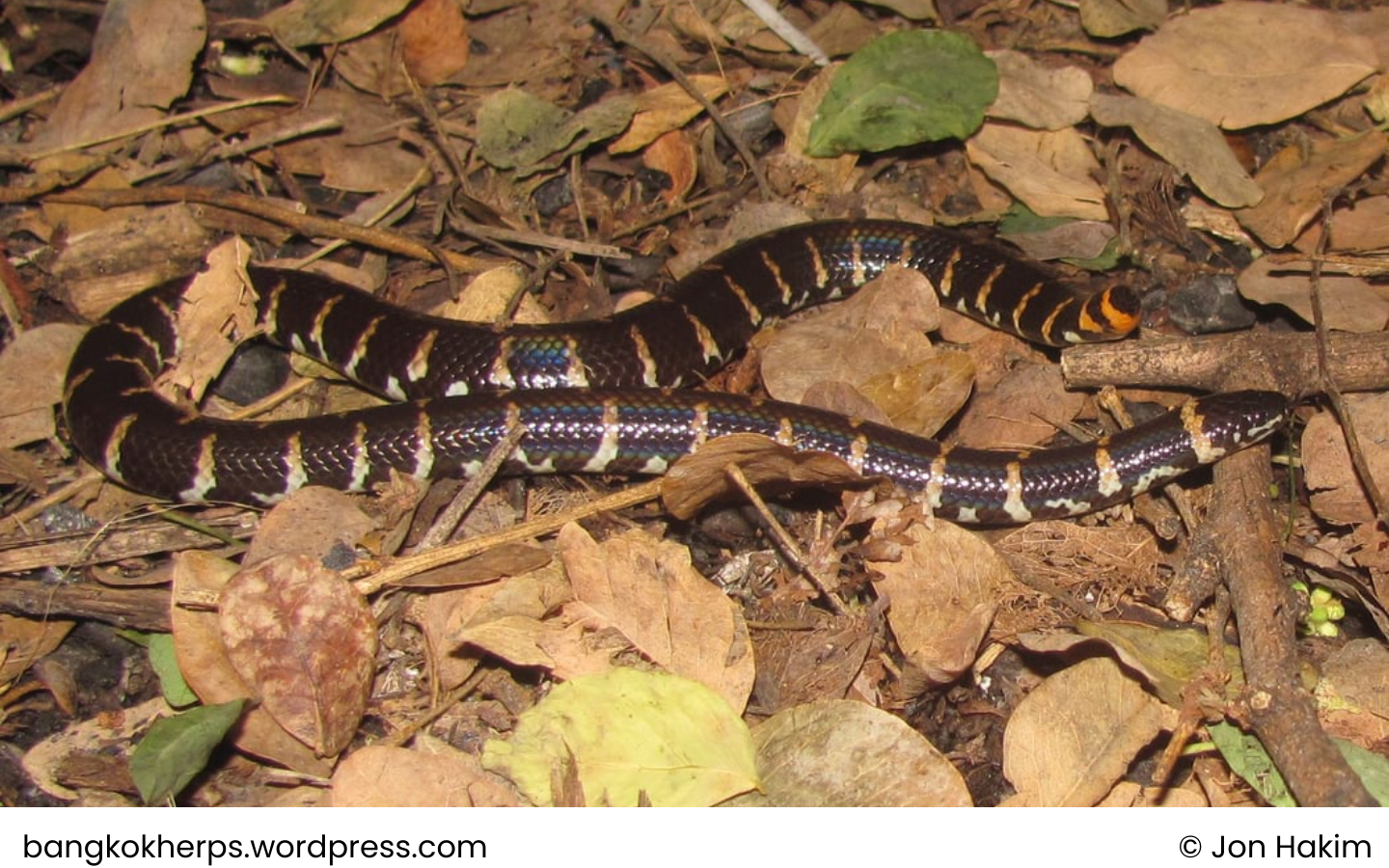
Science name: Cylindrophis jodiae – Amarasinghe, Ineich, Campbell & Hallermann, 2015
Taxonomic: Animalia>> Chordata>> Reptilia>> Squamata >> Cylindrophiidae >> jodiae
Species status: Endemic ; IUCN status: LC (Least Concern)
Description:
Physical characteristics:
Cylindrophis jodiae is distinguished from other pipe snakes by several key characteristics. It has 21 midbody scale rows (unlike other species in the genus, which have between 17 and 23), and 182–196 ventral scales (compared to 217–225 in Cylindrophis isolepis).
Its back features wide, interrupted bands (differentiating it from species like C. lineatus, which has lateral and middorsal stripes, and C. maculatus, which displays large reddish-brown spots).
This snake can grow up to 656 mm in length (based on paratype data), and the holotype is 415 mm in snout-vent length (SVL).
Coloration and Appearance:
The dorsal surface of Cylindrophis jodiae is marked by broad, dark bands interrupted by lighter coloration, giving it a banded appearance. The coloration is typically black or dark brown with lighter, often reddish or brownish, bands across the back.
The ventral surface is pale, usually white or cream, providing a sharp contrast to the darker dorsal coloration.
The head is small and rounded, blending smoothly into the cylindrical body, and the snake’s appearance is often mistaken for that of an elapid due to its slender build and distinct coloration.
The eyes are small with round pupils, contributing to the snake’s burrowing lifestyle.
Distribution and habitat:
Elevation: Information on elevation not available.
Area: This species is known from central Vietnam and Fujian, China. The type locality is recorded as Annam, Central Vietnam.
Habitat: Cylindrophis jodiae inhabits tropical forests and other regions within its range, living primarily in terrestrial habitats. Specific habitat preferences are not well-documented but likely resemble those of other members of the Cylindrophis genus, which are often found in leaf litter or loose soil where they can burrow.
Behaviour and ecology:
Lifestyle: Like other members of the Cylindrophis genus, C. jodiae is fossorial, spending much of its time underground or burrowing in soft soil. This makes it less commonly observed in the wild.
Reproduction: This species is viviparous, meaning it gives birth to live young rather than laying eggs.
Diet: While specific dietary information for C. jodiae is not available, species in the Cylindrophis genus generally feed on small vertebrates such as amphibians, reptiles, and possibly small mammals.
Conservation and status:
IUCN Red List Category and Criteria: The conservation status of Cylindrophis jodiae has not been formally assessed by the IUCN, but habitat loss and collection for trade may pose potential threats to the species.
Threats: No specific threats have been documented, though general threats to snakes in Southeast Asia, including habitat destruction and illegal trade, may impact this species. Further research is needed to assess population trends and threats.
Crocodile Trail – The Best Birding Trail in Cat Tien National Park
If you’re a birder or nature photographer planning a trip to Vietnam, few places offer [...]
Cong Troi Trail – Top 1 Dalat Plateau Birding Trail Experience
If you’re a birder or nature photographer planning a trip to Vietnam’s Central Highlands, the [...]
How to Identify the Greater Sand Plover, Tibetan Sand Plover and Siberian Sand Plover
Identification Differences within the Sand Plover Complex: The sand plover group, which was traditionally divided [...]
Highlights of Cat Tien National Park Reptiles and Amphibian Endemics
Spanning over 71,350 hectares of tropical forests, grasslands, and wetlands, Cat Tien National Park is [...]
Highlights of Cat Tien National Park Mammals in a World Biosphere Reserve
In addition to reptiles and birds, Cat Tien National Park is also rich in mammals, [...]
Kontum Plateau Endemic and Highlight bird
Kontum Plateau Endemic And Highlight Bird species like Chestnut-eared Laughingthrush and top birding routes while [...]